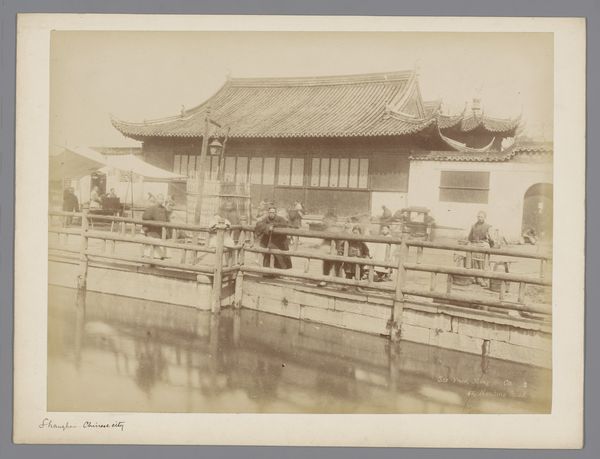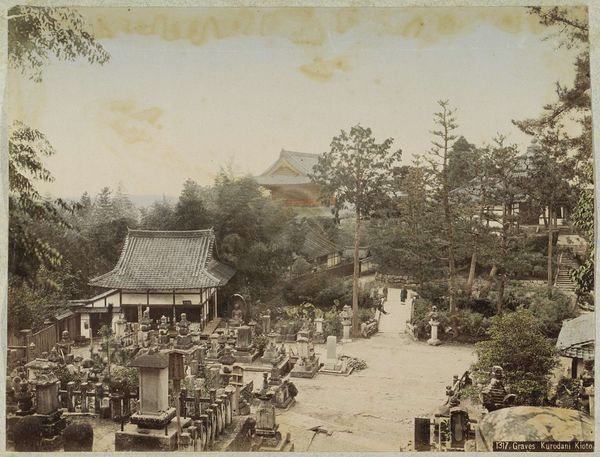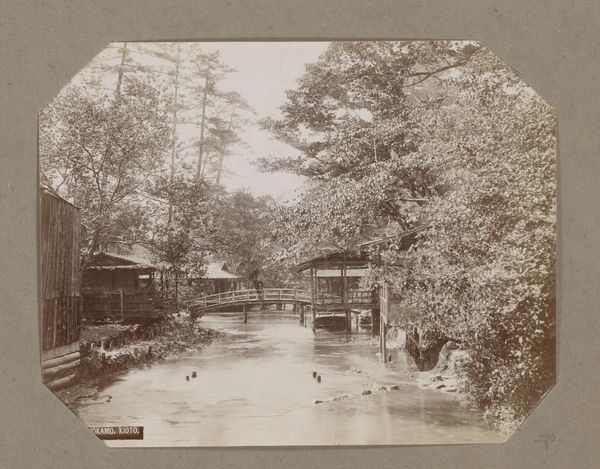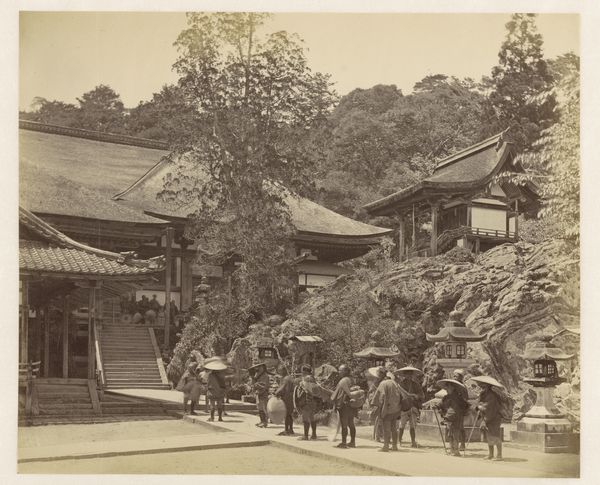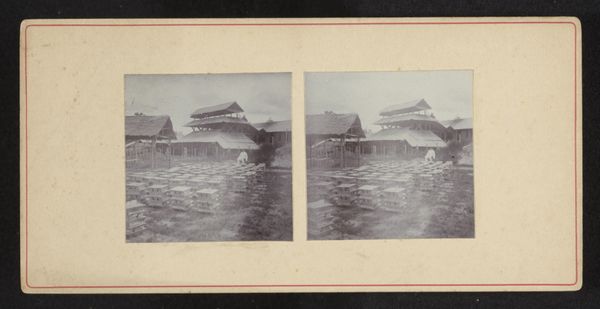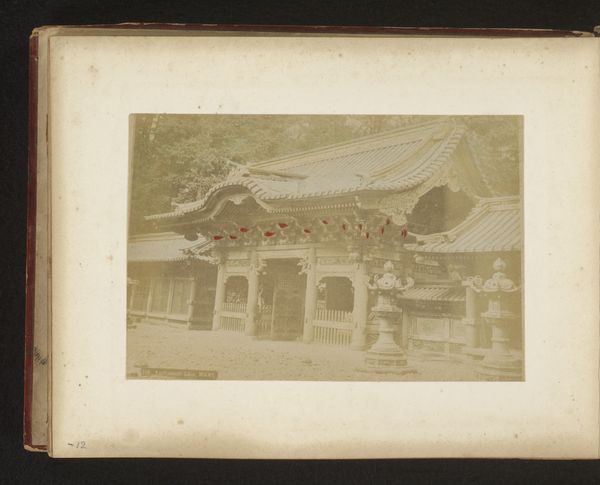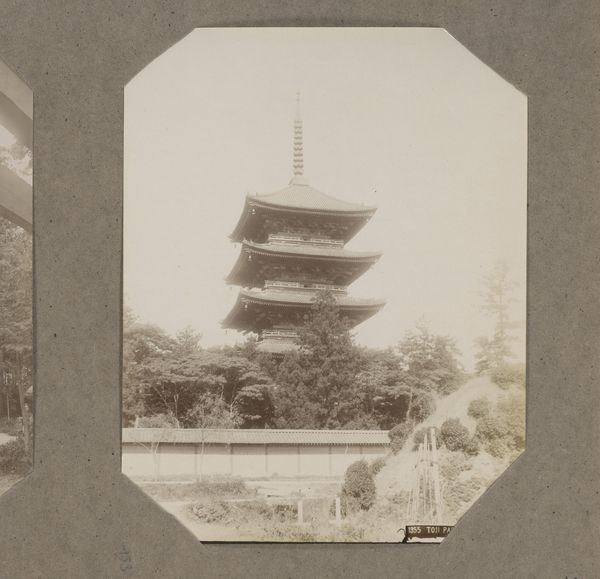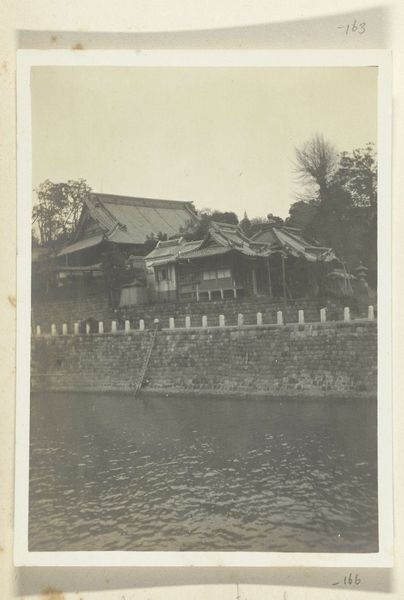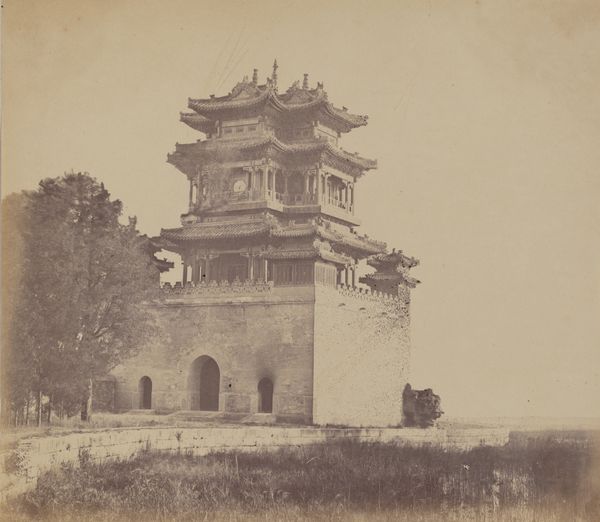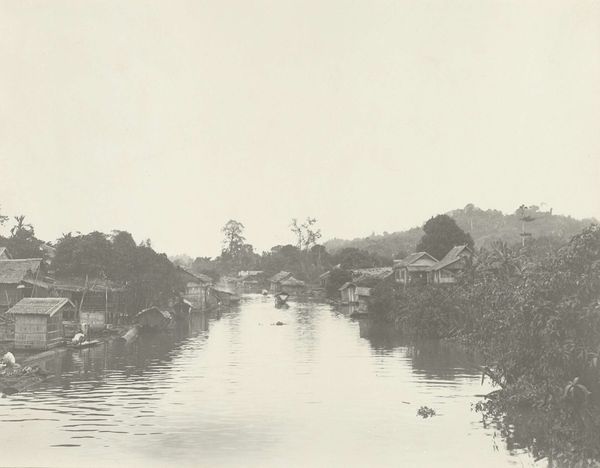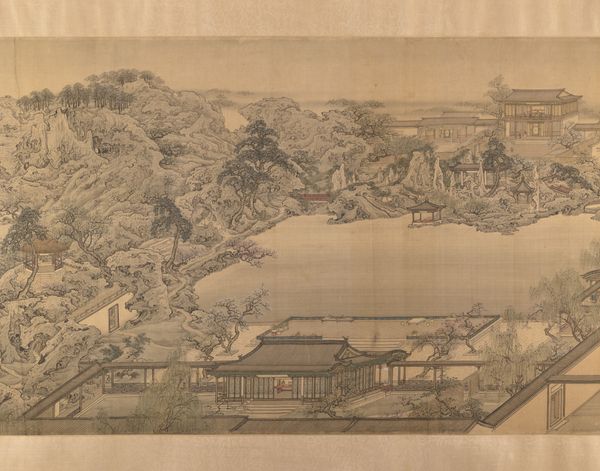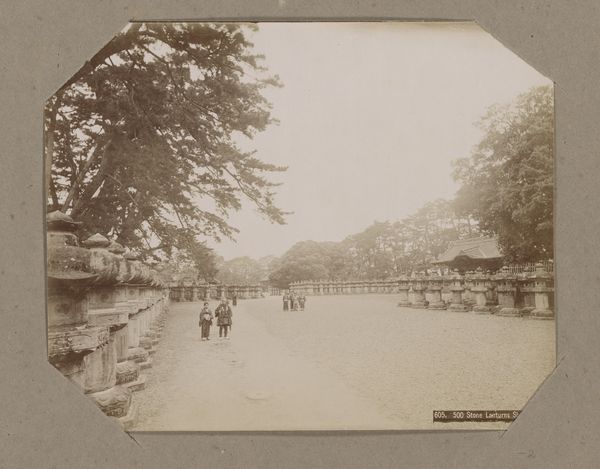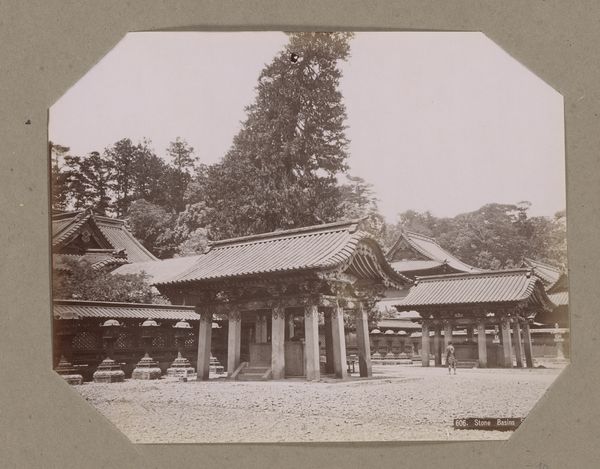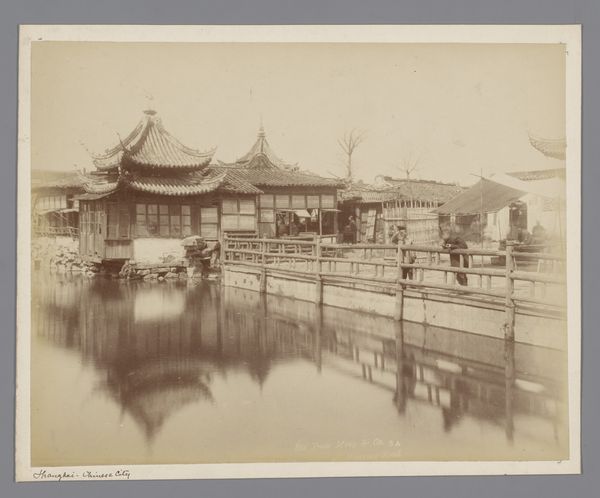
photography, albumen-print
#
water colours
#
landscape
#
japan
#
photography
#
oil painting
#
underpainting
#
orientalism
#
cityscape
#
watercolour illustration
#
watercolor
#
albumen-print
Dimensions: 7 11/16 x 10 1/8 in. (19.53 x 25.72 cm) (image)10 1/2 x 13 5/8 in. (26.67 x 34.61 cm) (mount)
Copyright: Public Domain
Curator: This albumen print, titled "Nagoya Castle," was captured by Tamamura K. around 1891. The photograph is now part of the collection here at the Minneapolis Institute of Art. Editor: My first thought? Serenity. There's this incredibly still, quiet energy radiating from it. The misty sky and muted colors... it's like a faded memory. Curator: Yes, it’s more than just a pretty picture. We should consider the cultural context. The Meiji era saw Japan rapidly Westernizing. Photography itself was a relatively new technology that was eagerly adopted, sometimes to document the “exotic East” for Western audiences. Editor: Right, and I wonder how Tamamura K. positioned himself within that gaze. Was he reinforcing stereotypes or subverting them? This photo feels very intentional. It’s not just a snapshot. Curator: Exactly. Photography provided a space for nuanced expression. In the hands of Japanese artists, photography became a tool for asserting cultural identity amid Western influence. There's a political dimension in deciding what aspects of Japanese life to showcase. Editor: I see that tension. The castle, a symbol of tradition and power, is framed almost ethereally, with this hazy light… like it's fading into the mists of time. It evokes nostalgia but also a kind of…resignation? Curator: I think you are correct about its melancholy. It also raises interesting questions about representation, power, and the gaze. Who is seeing this image, and what are they meant to take away from it? Consider also, whose stories aren’t being told in this carefully crafted scene? Editor: So, more than just a picturesque landscape, it's a complex layering of history, identity, and maybe a quiet rebellion. I’ll definitely look at this photo differently now. Curator: Precisely. Art often invites us to question, not just observe. "Nagoya Castle," in its apparent stillness, holds a multitude of such questions.
Comments
No comments
Be the first to comment and join the conversation on the ultimate creative platform.
